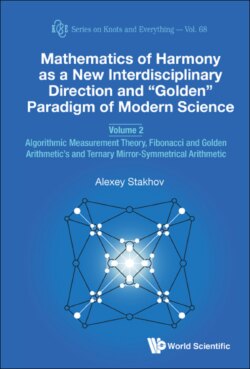Читать книгу Mathematics of Harmony as a New Interdisciplinary Direction and “Golden” Paradigm of Modern Science - Alexey Stakhov - Страница 25
На сайте Литреса книга снята с продажи.
1.9. Optimal (n, k, 0)-Algorithms 1.9.1. Recursion method
ОглавлениеAs mentioned above, the (n, k, 0)-algorithm is a n-step measurement algorithm, which uses the k IE, the movement of which on the segment AB that obeys the restriction S = 0. Recall that the restriction S = 0 essentially means the absence of some restrictions on the movement of IE, that is, each IE at a particular step of the measurement algorithm can be enclosed to the arbitrary point of the segment AB.
We will solve the task of synthesis of the “optimal” (n, k, 0)-algorithm, that is, the measurement algorithm, which, for the given n, k and the restriction S = 0, divides the segment AB into the biggest number of equal intervals.
To solve the problems of synthesizing the optimal (n, k, S)-algorithms, we will use the “method of recurrent relations” [110], which is widely used to solve combinatorial problems. The essence of this method is that the solution of some n-step combinatorial task reduces to solving the (n – 1)-step combinatorial task; at the same time, there is the recurrent relation, which connects both solutions. This continues until we come to some “simple” combinatorial task, the solution of which does not cause difficulties.
